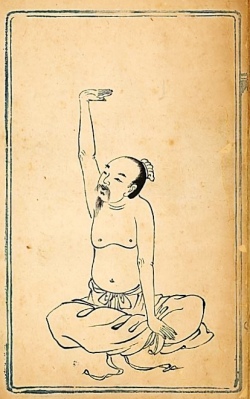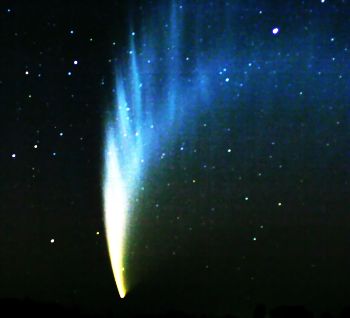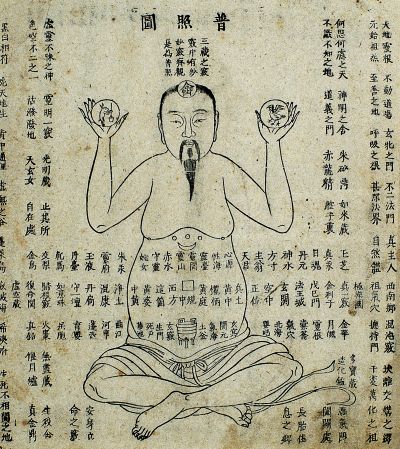Qi 气 ch'i WG - vitalizing essence


The concept of qi (气 qì also written as ch’i) is important to the understanding of Daoist philosophy. Qi is difficult to translate into English as there are some misleading parallels. One interpretation is as an all pervading life force - a divine essence that vitalizes the Universe. It is not matter or spirit but gives everything its form and essence, a bit analogous to the Higgs Boson ➚ that gives all matter its mass. It is strongly connected to Feng Shui, yin-yang and traditional medicine. Strengthening the flow and accumulation of qi is a key activity for practitioners. It dates back a long way in Chinese history - probably as early as the Shang dynasty (3,500 years ago). The notion of qi was supported by ancient astronomical observations of the direction of comet tails that always point away from the sun - irrespective of their direction of travel. This gave evidence that the sun is emitting an unseen field or force that like qi.

The character for qi represents ‘steam’ rising, in the traditional form it includes ‘rice’ under a lid which makes the derivation clearer to see: 氣. From qi some say yin and yang developed, it is the primordial essence of everything. It is qi that harmonizes the balance of yin and yang.
Feng Shui practice takes into account the natural flow of qi, where it considered more like an ‘air’ than a life force. Buildings should be located where there is a meandering but steady flow of qi. Straight lines in the form of roads, rivers, power lines give too strong a direct flow of qi, while obstacles can lead to ‘bad’ stagnant 杀气 shā qì where there is no natural flow. A happy medium should be aimed for where qi flows in smooth curves and can set up eddies. This can be seen in the design of Chinese gardens as well as in building and city design. Trees are believed to exude an excess of qi, particularly in the morning, so people can benefit from exposure to the qi from early morning exercise in a public park. Pagodas were built where the flow of qi was stagnant to revitalize it. High buildings would block the flow and is one reason why housing was originally of at most two levels. Modern skyscrapers are bad for flow of qi and effort is expended to mitigate the bad effects, sometimes by designing in gaps for its flow. The HSBC building in Hong Kong is sited with a good view of the harbor and also has an atrium to mitigate bad effects. Feng shui takes account of these flows of qi but also takes account of compass directions.

Personal meditation and contemplation can build up qi in the body to bring good health and a long life. In Traditional Chinese Medicine the regulation of the flow of qi can invigorate and cure ailments. The investigation of qi may have led to an early understanding of the flow of blood through the body (the lungs were taken as bringing qi directly into the body rather than via the blood). For men the flow of qi meant the retention of sperm (精 jīng) as it was considered the divine essence. There are Daoist practices to prevent ejaculation during intercourse that were said to maintain the strength of qi ‘life force’ within the body. Chinese men will often roll up their shirts in summer to expose their navel, as well as cooling off this allows for qi to be absorbed through the navel.
Acupuncture is used to block and control the flow around the body. The qi is said to flow along meridians around the body and the needles are inserted at the appropriate place according to the illness being treated. Exercise is considered important to maintain healthy flow taijiquan keeps the bodies in good shape and careful control of breathing as practiced in 气功 qì gōng is a more direct reference to qi as ‘air/breathe’. The main aim of qigong is to use long, slow breathes, making the most of each inhalation. The banned Falun Gong movement ➚ practice their own version of qigong. Daoists have long sought the secrets of immortality and Chinese Emperors have tried to prolong their lives with qi preservation techniques and elixirs.
At a more philosophical level, qi to Daoists is an all pervading essence; harmony between everything in the world, not just between people. This is rather similar to the idea of ‘The Force’ in the Star Wars ➚ films. Qi is an ‘unknowable’ life force that only skilled practitioners can use to their advantage, understanding the paramount animating essence leads to a knowledge of how the whole universe works.